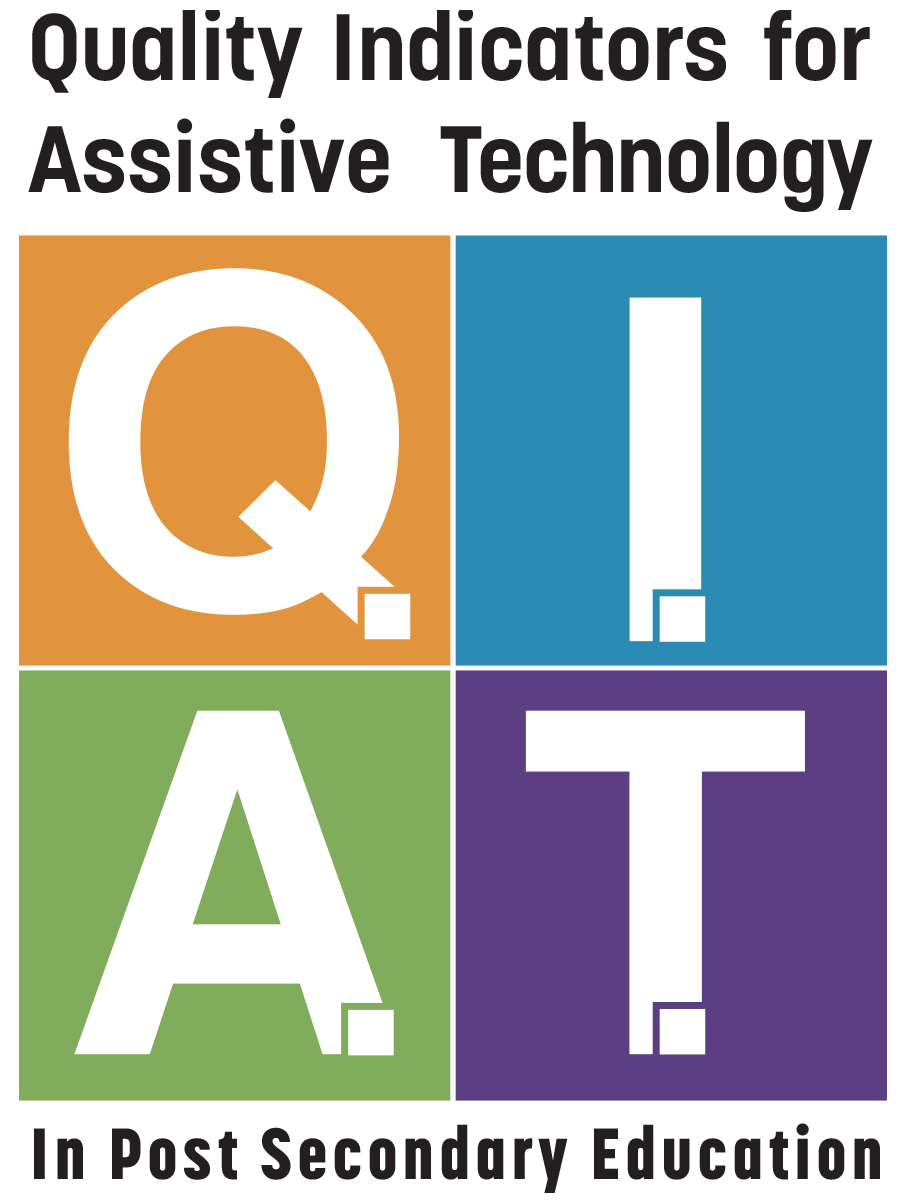Student Self-Evaluation Matrix
QIAT-PS has also developed a set of student quality indicators for assistive technology with an accompanying Student Self-Evaluation Matrix tool for students to rate themselves on their AT skills. The tool is useful to both students struggling to manage AT in higher education settings and for K-12 programs to assist students in enhancing self-awareness and problem solving with AT for better transition outcomes.
You can create a free institutional account that will allow you to keep results for multiple students, track student growth, and generate action plans for each student. Students do not make their own accounts. If you already have QIAT-PS account, select Account from the top right to start a new matrix or to view your existing matrices. Or Create an Account to start a Student matrix.
You may access a list of resources to use directly with students to improve each indicator skill area. These student resources are available for each indicator once a matrix is marked final and an associated action plan created. The student resources are also available as a compiled list.
Student Quality Indicators
The Student QIAT-PS indicators are a set of statements that describe the characteristics of high quality AT skills students ideally acquire before entering Post-Secondary educational environments.
The indicators are:
1. AT Self-awareness
The student is aware of the impact of his or her disability on performance and knowledgeable about AT used to address that impact.
2. Knowledge of Legal Rights Regarding AT
The student understands the laws which address the rights to accommodations and the use of assistive technology, including how to get help when access is denied.
3. Disclosure of Disability for AT Accommodations
The student understands that federal laws require disclosure of disability information in order to acquire necessary AT devices and supports. The student is able to provide the information needed in order to request an AT accommodation effectively.
4. AT Self-Advocacy
The student knows about available AT supports and takes a leadership role with disability services or other agencies to acquire needed AT devices and services.
5. AT Communication
The student is able to effectively communicate with faculty, service providers and peers concerning his/her disability and the ways AT is used.
6. AT Self-evaluation
The student knows how to evaluate personal performance when using AT and makes adjustments in AT use in order to improve performance.
7. Strategic Use of AT
The student uses of a variety of AT solutions and can independently choose the appropriate AT option for each situation
8. Independent AT Use
The student uses AT accommodations effectively and independently.
9. AT Problem Solving
The student knows strategies for identifying issues, problem solving difficulties and acquiring technical assistance when needed
10. Long-term AT Planning
The student knows how to make long-term plans for AT selection, acquisition and use.

